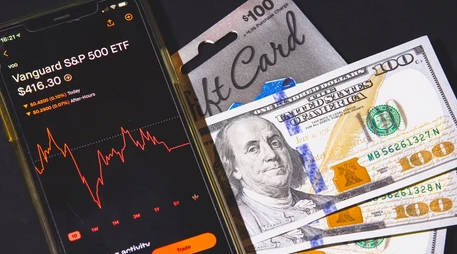
Ultima Markets App
Trade Anytime, Anywhere
Important Information
This website is managed by Ultima Markets’ international entities, and it’s important to emphasise that they are not subject to regulation by the FCA in the UK. Therefore, you must understand that you will not have the FCA’s protection when investing through this website – for example:
- You will not be guaranteed Negative Balance Protection
- You will not be protected by FCA’s leverage restrictions
- You will not have the right to settle disputes via the Financial Ombudsman Service (FOS)
- You will not be protected by Financial Services Compensation Scheme (FSCS)
- Any monies deposited will not be afforded the protection required under the FCA Client Assets Sourcebook. The level of protection for your funds will be determined by the regulations of the relevant local regulator.
Note: Ultima Markets is currently developing a dedicated website for UK clients and expects to onboard UK clients under FCA regulations in 2026.
If you would like to proceed and visit this website, you acknowledge and confirm the following:
- 1.The website is owned by Ultima Markets’ international entities and not by Ultima Markets UK Ltd, which is regulated by the FCA.
- 2.Ultima Markets Limited, or any of the Ultima Markets international entities, are neither based in the UK nor licensed by the FCA.
- 3.You are accessing the website at your own initiative and have not been solicited by Ultima Markets Limited in any way.
- 4.Investing through this website does not grant you the protections provided by the FCA.
- 5.Should you choose to invest through this website or with any of the international Ultima Markets entities, you will be subject to the rules and regulations of the relevant international regulatory authorities, not the FCA.
Ultima Markets wants to make it clear that we are duly licensed and authorised to offer the services and financial derivative products listed on our website. Individuals accessing this website and registering a trading account do so entirely of their own volition and without prior solicitation.
By confirming your decision to proceed with entering the website, you hereby affirm that this decision was solely initiated by you, and no solicitation has been made by any Ultima Markets entity.
I confirm my intention to proceed and enter this website Please direct me to the website operated by Ultima Markets , regulated by the FCA in the United KingdomIs VOO a Good Investment Right Now?
When you are building a long term portfolio, the simplest ideas often work best. Many investors start by asking whether they should own the broad US market through a single fund, and that naturally leads to the Vanguard S&P 500 ETF, VOO. Before we discuss is VOO a good investment, it helps to understand what you are actually buying, how it fits with your goals, and the trade offs that come with it.
In this article we will cover what VOO is, why investors choose it, the key risks to watch, how it compares with similar funds, and practical steps to use it in a balanced plan.

Is Voo A Good Investment
Yes. For long term investors who want simple and low cost access to leading US companies, Vanguard S&P 500 ETF (VOO) is a strong core holding. It tracks the S&P 500 with an expense ratio of 0.03% ongoing fee and offers broad exposure in a single trade. The main trade offs are today’s heavy concentration in a handful of mega caps, normal equity volatility, and USD exposure for non US investors.
What You Actually Own With VOO
VOO follows the S&P 500, an index of around 500 large US companies that together cover approximately 80% of US market capitalisation. That breadth is why the S&P 500 is widely used as a proxy for the whole market. Buying VOO gives you that same rules-based portfolio at index-level cost.
Why Costs And Structure Matter
Index tracking removes manager guesswork and style drift and keeps fees low. Vanguard lists VOO’s expense ratio at 0.03% (about $3 per $10,000 per year). Warren Buffett has long advised a low-cost S&P 500 fund (he explicitly suggested Vanguard) as the bulk of a simple allocation paired with short-term Treasuries.
What Is Different In 2025
The S&P 500 is market-cap weighted, so the biggest companies move it the most. As of late 2025, the index’s leadership is unusually top-heavy, with the largest names collectively near the high-30s percent of index weight, led by Nvidia, Microsoft, Apple and Amazon. This boosts returns when leaders run and increases sensitivity if they stumble.
The index also refreshes its members to stay representative. Effective 22 September 2025, AppLovin, Robinhood Markets and Emcor joined the S&P 500, replacing MarketAxess, Caesars and Enphase, a good illustration of the ongoing evolution inside a passive wrapper.
Does Passive Usually Beat Active Over Time
SPDJI’s SPIVA research consistently shows that most active US large cap funds underperform the S&P 500 over long horizons after fees. This is a key reason many investors choose a low cost index core like VOO.
The Benefits and Risks of VOO
To decide Is VOO a Good Investment for you, use the quick checklist below to match its strengths and trade offs with your goals and time horizon.
Benefits
- Broad Diversification In One Line
You get instant exposure to hundreds of leading companies across sectors without picking stocks. - Ultra Low Ongoing Cost
VOO’s 0.03 percent expense ratio helps more of the market return compound for you. - Transparent And Rules Based
The S&P 500 committee maintains the index; the ETF tracks it closely.
Risks
- Concentration At The Top
Mega caps currently carry outsized weight, which can raise both upside and downside sensitivity. - US And Currency Exposure
Returns depend on US earnings, valuations and policy, and non US investors also wear USD moves. - Normal Equity Volatility
Even a high quality index can fall sharply in recessions or rate shocks, so your allocation and rebalancing plan matter.
VOO Versus Common Alternatives

IVV and SPY
iShares IVV tracks the same index at 0.03% and is effectively interchangeable for many long-term investors. SPY is the original S&P 500 tracker with deep trading liquidity but carries a higher 0.0945% fee that matters more to buy-and-hold investors than to short-term traders.
Equal-weight S&P 500 (RSP)
If you dislike mega-cap dominance, RSP spreads weight evenly across constituents, changing the behaviour of returns. Trade-off: a higher 0.20% fee.
Total-market funds
Prefer to include mid and small caps in one line Consider a US total-market ETF alongside or instead of VOO. (Selection depends on platform access and costs.)
How To Use VOO In A Simple Plan
- Set a target allocation
Decide how much of your portfolio belongs in US large caps based on your time horizon and risk tolerance. - Automate contributions
Monthly investing helps reduce timing stress and builds discipline. - Pair for balance
Add bonds for stability and non-US equities for country diversification. - Rebalance on a schedule
Use calendar dates or percentage bands so you trim winners and add to laggards without guesswork. - Mind costs and taxes
Compare fund fees, trading commissions and your local tax treatment of dividends and gains.
Frequently Asked Questions
Does VOO pay dividends
Yes. VOO pays quarterly distributions that reflect the index’s dividends. A recent example was $1.74 per share with an ex-dividend date of 29 September 2025. Yields change with price.
Is it better to buy all at once or gradually
Both can work. Lump-sum investing maximises time in the market. Regular contributions make the habit stick. Long-run SPIVA results suggest costs and staying invested matter more than perfect timing.
What if I dislike cap weighting
Consider equal-weight exposure like RSP, understanding the different behaviour and the 0.20% fee.
Final Thoughts

Is VOO a good investment? For many long-term investors, yes. You get broad US equity exposure at a tiny fee in a rules-based portfolio. Acknowledge the current mega-cap concentration, pair VOO with bonds and non-US equities, automate contributions, and rebalance on schedule. That simple process turns a solid product into a dependable core.
Disclaimer: This content is provided for informational purposes only and does not constitute, and should not be construed as, financial, investment, or other professional advice. No statement or opinion contained here in should be considered a recommendation by Ultima Markets or the author regarding any specific investment product, strategy, or transaction. Readers are advised not to rely solely on this material when making investment decisions and should seek independent advice where appropriate.












